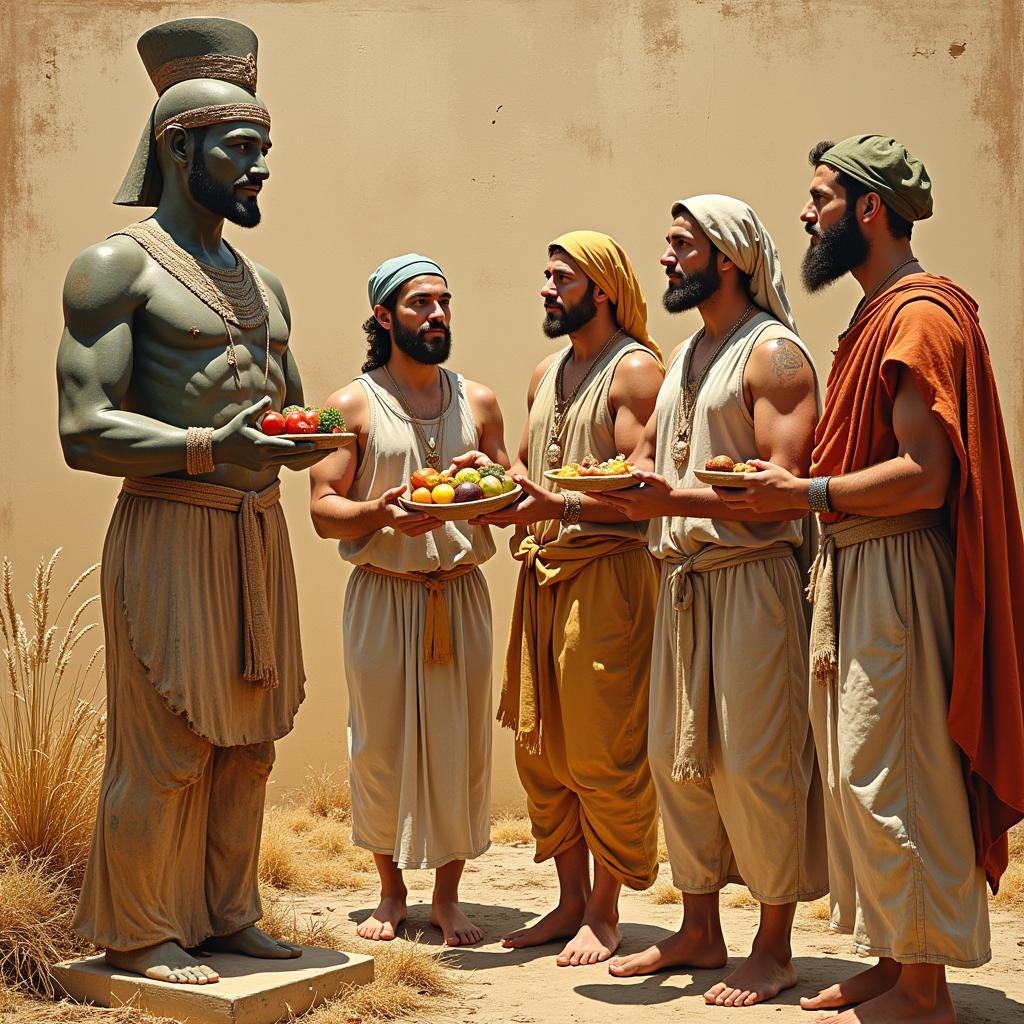Ancient Sumer, nestled in the fertile crescent of Mesopotamia, thrived thousands of years ago as one of the world’s earliest civilizations. Their complex social structures, innovations in writing, and monumental architecture weren’t solely products of human ingenuity. Instead, the Sumerians believed their achievements were directly inspired and guided by a pantheon of powerful deities. To understand Sumerian society, we must explore how their religious beliefs permeated every aspect of their lives, influencing everything from their social hierarchy to their impressive architectural achievements.
A World Governed by Gods: The Sumerian Pantheon
The Sumerians worshipped a vast pantheon of gods, each presiding over specific aspects of the natural world and human endeavors. Anu, the god of the sky, reigned supreme, while Enki, the god of water and wisdom, and Inanna, the goddess of love and war, held prominent positions. This divine council, in the Sumerian worldview, dictated the fate of humanity and demanded respect, obedience, and, above all, constant appeasement.
The Gods’ Representatives on Earth: Priests and Kings
This intricate relationship between the divine and mortal realms led to the development of a powerful priestly class. The Sumerians believed that priests acted as intermediaries between gods and humans. The grand temples dedicated to specific deities became centers of political and economic power. The priests controlled the temples’ vast landholdings, received offerings from the populace, and advised the kings.
Kings, while powerful figures, were perceived not as gods themselves but as divinely appointed stewards. Their legitimacy rested upon the belief that they carried out the gods’ will, ensuring the land’s fertility, the people’s safety, and the proper observance of religious rituals.
Ziggurats: Reaching for the Heavens
The most iconic symbols of Sumerian religious beliefs are the ziggurats, massive stepped pyramids that dominated the urban landscape. These towering structures, built with mudbrick and adorned with colorful glazed tiles, served as temples and administrative centers.
The Sumerians believed that these artificial mountains brought them closer to the heavens, facilitating communication with the gods. The ziggurat’s summit housed a shrine to the city’s patron deity, where priests performed elaborate rituals and sacrifices to appease them.
Everyday Life Shaped by Divine Will
Religious beliefs permeated the daily lives of the Sumerians. Agriculture, the backbone of their economy, was seen as a gift from Enki, the god of water. Farmers offered sacrifices and prayers for bountiful harvests and protection from floods and droughts.
 Sumerian Farmers Making Offerings to a Deity
Sumerian Farmers Making Offerings to a Deity
Similarly, craftspeople dedicated their work to specific deities, believing their skills were divinely bestowed. Even seemingly mundane activities like brewing beer or weaving cloth were seen as sacred acts requiring rituals and offerings to ensure success.
The Legacy of Sumerian Beliefs
While Sumerian civilization eventually declined, their religious beliefs cast a long shadow on the ancient world. Their pantheon of gods, creation myths, and religious practices influenced later Mesopotamian cultures like the Babylonians and Assyrians. Traces of Sumerian religious ideas can even be found in the monotheistic traditions that emerged in the region, shaping the course of Western religious thought for millennia.
By understanding how profoundly religious beliefs influenced the organization of Sumerian society, we can better appreciate the complexity and sophistication of this ancient civilization. The Sumerians’ deep-seated belief in the power of the divine drove their social structure, architectural achievements, and even their daily lives, leaving behind a legacy that continues to fascinate us today.